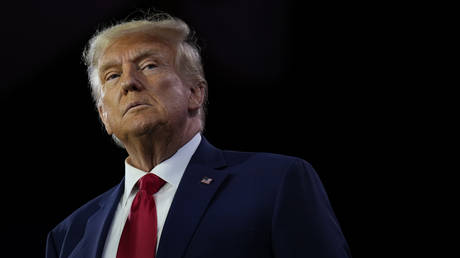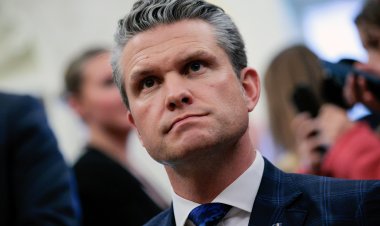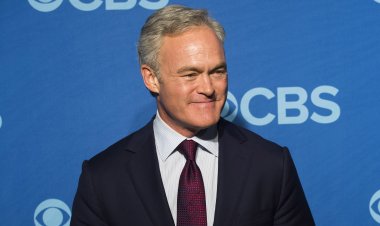Trump's tariff strategy defies regulations – and challenges the global community to intervene
<b>Washington Rewrites Trade Law by Ignoring It</b> The trajectory of global trade and the effects of US President Donald Trump’s recent tariff actions will significantly depend on the ultimate goals outlined by Washington. Is the United States...

The trajectory of global trade and the effects of US President Donald Trump’s recent tariff actions will significantly depend on the ultimate goals outlined by Washington. Is the United States positioning itself to withdraw from the World Trade Organization, or is it seeking to implement long-overdue reforms within an organization it has increasingly marginalized?
By instituting broad new tariffs, the US has not only breached its WTO commitments but has also indicated that it no longer considers itself bound by international trade law. Furthermore, Washington has made no effort to utilize the WTO’s established mechanisms for addressing emergency tariff increases. This overlooked situation is key: America must either align itself with the existing rules or continue down a unilateral path, eschewing multilateral law. The decision will impact the future of US participation in the WTO.
The WTO has two primary means of enforcing compliance: moral pressure and retaliatory measures. While moral pressure may influence smaller countries, it proves ineffective against seasoned negotiators from the world’s largest economy. Retaliation, on the other hand, is a slow process, requiring disputes to be adjudicated, rulings to be made, and damages to be calculated – a process that can take up to two years. With the WTO Appellate Body currently incapacitated due to a US blockade, finding resolutions is not feasible. Any countermeasures enacted by other countries would also constitute WTO violations, as the system was not designed to handle such breakdowns.
Although the WTO cannot expel the United States, it may consider alternative arrangements to maintain its multilateral functions without American involvement. These solutions are complex yet attainable. Some members might even welcome a US exit, given Washington's recent disruption of the organization.
Importantly, the US has not formally withdrawn, and certain reform proposals warrant consideration. It has suggested reassessing the special treatment afforded to developing countries, noting that many are now significant global economic players. Additionally, Washington pushes for stricter regulations on nations that fail to promptly notify their trade policies and subsidies. Its proposal to exclude non-compliant countries from meetings and raise their dues has faced strong opposition from WTO bureaucrats, a reaction that may have exacerbated America’s shift toward tariffs.
The prospect of a “WTO minus the US” serves as a pressure tactic. However, since over 40% of US corporate profits come from international markets, relinquishing all influence over global trade norms does not align with its strategic interests. Nevertheless, establishing an effective alternative path necessitates unprecedented cooperation among WTO members, a challenging task given the current leadership void. The EU lacks resolve, China is not fully prepared, and collective leadership among similar-minded nations is proving to be ineffective.
The most probable outcome is a series of reciprocal agreements. Smaller economies that depend on US markets may offer customized concessions. Countries like Switzerland and Singapore, which maintain low tariffs, may find it easier to adapt. Non-tariff barriers are generally simpler to modify, provided they do not disguise protectionist measures.
In the case of larger economies such as the EU or Japan, their likely strategy involves initially retaliating to alarm American industries, which could then prompt negotiations. This might galvanize US corporate lobbying power and compel Washington to reassess its stance. If Trump’s genuine goal is simply to secure better access for US companies abroad, this traditional approach could be effective.
However, if his objective diverges—such as instigating a controlled global economic crisis to eliminate the US trade deficit—the situation could become significantly more unstable. In this scenario, tariffs may endure while compromise remains elusive.
Such developments pose substantial risks to international trade. Some forecasts suggest that global GDP could contract by 0.3-0.5% due to the interplay of US tariffs and retaliatory actions. Disrupted supply chains will heighten competition in third-party markets, and US imports may decline by up to a third, leading to inflation and shortages for American consumers.
Ironically, the US might simultaneously see a surge in domestic investment. A recent projection indicated that as much as $3 trillion could flow back into the American economy. Trump’s strategy may represent a more aggressive form of import substitution, accompanied by both advantages and disadvantages.
Currently, Russia is not directly impacted by these tariff changes. Bilateral trade has already diminished severely due to sanctions, and no new US tariffs specifically target Russia. However, the secondary effects could be significant.
Global trade resembles an interconnected network of rivers. Trump’s tariff barriers, coupled with retaliatory actions, will likely redirect goods to other markets, often at discounted rates. These diverted exports may suppress prices and harm local industries, including those in Russia. A decrease in demand for industrial inputs like oil, gas, and metals could negatively affect the Russian economy.
Simultaneously, imports into Russia could rise. While this influx may seem acceptable for products with little domestic competition, the consequences could be severe for Russian manufacturers if cheaper foreign metals, chemicals, or automobiles dominate the market.
As the main target of US tariffs, China might ramp up its exports to Russia. In theory, Beijing can control its export quantities, so it’s essential to engage with Chinese officials to develop a coordinated response to prevent destabilizing surges.
Fortunately, Russia possesses the legal framework to respond: we can raise tariffs, address dumping, and retaliate against subsidized imports. However, execution poses challenges. Decision-making within the Eurasian Economic Union is often slow and hindered by conflicting national priorities. Adjusting tariffs currently takes a year, while implementing safeguard measures can extend to 18 months. This system, designed for a more stable world, urgently requires reforms.
It is also time for Russia to review the myriad free trade agreements it has signed. Trump has criticized NAFTA and similar agreements for undermining US industry, prompting us to consider who genuinely benefits from our trade preferences.
Every choice in trade policy carries repercussions. Trump’s tariff strategy serves as a case study in how those consequences unfold.
Sophie Wagner for TROIB News
Find more stories on Business, Economy and Finance in TROIB business












